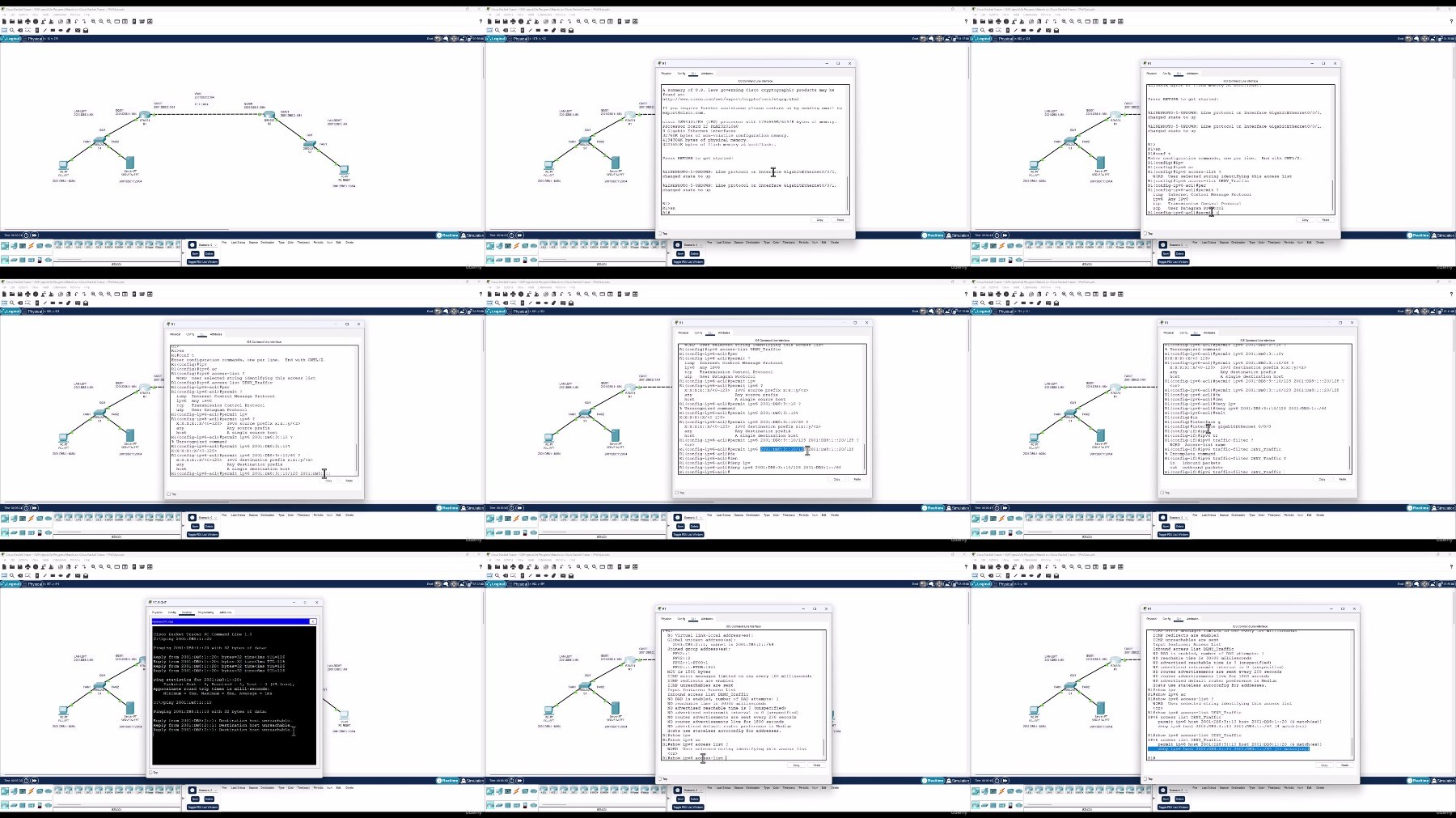Most Commented
Hands On Cisco Packet Tracer: Ipv6 Labs




Description material

Hands On Cisco Packet Tracer: Ipv6 Labs
Published 10/2024
MP4 | Video: h264, 1920x1080 | Audio: AAC, 44.1 KHz
Language: English | Size: 297.74 MB | Duration: 1h 38m
Mastering IPv6 Networking Through Practical Simulations
What you'll learn
The basics of IPv6, including its necessity, key features, and how it differs from IPv4.
IPv6 addressing and configuration, including practical hands-on labs.
Configuring IPv6 routing protocols such as OSPFv3 and setting up dual-stack environments.
Advanced topics like Stateless Address Autoconfiguration (SLAAC), DHCPv6, and IPv6 Access Control Lists (ACLs).
We'll even explore concepts like IPv6 tunneling over IPv4, despite the limitations of Packet Tracer.
We'll also provide valuable troubleshooting techniques and cover common IPv6 issues, so you'll leave this course ready to diagnose and resolve problems.
Requirements
A fundamental understanding of networking concepts, such as IP addressing, subnetting, and how routers and switches work.
Familiarity with the OSI model and common network protocols like TCP/IP.
Some prior experience with IPv4 configuration and addressing will help you grasp the differences between IPv4 and IPv6 more easily.
While this course focuses on IPv6, a passion for learning new networking technologies is key. No prior experience with IPv6 is required.
Description
Dive into the world of IPv6 networking with "Hands-On Cisco Packet Tracer: IPv6 Labs." This course is designed for networking enthusiasts and professionals seeking to enhance their understanding of IPv6 through practical, hands-on experience using Cisco Packet Tracer.In this course, you will engage with a series of interactive labs that cover essential IPv6 concepts, including address planning, subnetting, and configuration. You'll gain a solid foundation in the differences between IPv4 and IPv6, learning how to effectively implement IPv6 in real-world scenarios.Throughout the course, you will:Explore IPv6 Addressing: Understand the structure and purpose of IPv6 addresses, including global, link-local, and unique local addresses.Practice Subnetting: Master IPv6 subnetting techniques and learn how to calculate subnets efficiently.Configure IPv6 Routing: Gain hands-on experience configuring routing protocols such as OSPFv3, ensuring robust communication in your networks.Implement Security Features: Learn how to secure IPv6 networks and troubleshoot common issues using best practices and tools available in Packet Tracer.With step-by-step instructions and real-world scenarios, this course empowers you to build, configure, and troubleshoot IPv6 networks confidently. By the end of the course, you will have developed the skills necessary to navigate the evolving landscape of networking with proficiency in IPv6.Join us and take the next step in your networking journey!
Overview
Section 1: Introduction
Lecture 1 Introduction
Lecture 2 What is Cisco Packet Tracer?
Lecture 3 Why Learn Cisco?
Lecture 4 CCNA vs CCST
Lecture 5 Cisco Network Engineers
Section 2: IPv6 Overview
Lecture 6 A Detailed Overview of IPv6
Section 3: IPv6 Addressing
Lecture 7 IPv6 Address Format
Lecture 8 Building our Default Lab
Lecture 9 How to setup an IPv6 Address on an Interface
Lecture 10 How to Dual-Stack IPv6 and IPv6 Addresses
Lecture 11 IPv6 on Servers
Section 4: IPv6 on Cisco Routers
Lecture 12 IPv6 Static Routing
Lecture 13 IPv6 Default Routing
Lecture 14 OSPFv3
Lecture 15 BGP for IPv6
Section 5: Stateless and Stateful Address Configuration
Lecture 16 IPv6 EUI-64
Lecture 17 Stateless Address Autoconfiguration (SLAAC)
Lecture 18 Stateful DHCPv6
Lecture 19 Stateless DHCPv6
Lecture 20 NDP Overview
Section 6: IPv6 Access Control Lists
Lecture 21 Access Control Lists (ACLs)
Section 7: IPv6 Tunneling
Lecture 22 Tunneling IPv6 over IPv4
Section 8: Troubleshooting IPv6 Networks
Lecture 23 Basic IPv6 Troubleshooting Tools and Common IPv6 Issues
Section 9: Super Secret to more Packet Tracer Labs
Lecture 24 Super Secret to more Packet Tracer Labs
Section 10: Course Conclusion
Lecture 25 Conclusion
Students preparing for entry-level networking certifications like CCNA or CCST.,IT support staff or technicians looking to expand their knowledge of routing and network configuration.,Individuals from non-networking backgrounds looking to switch to networking careers and seeking practical, hands-on training.,Anyone interested in learning how to configure, manage, and troubleshoot IPv6 protocols in simulated environments.

FileAxa
Warning! You are not allowed to view this text.
DDownload
Warning! You are not allowed to view this text.
RapidGator
Warning! You are not allowed to view this text.
FileStore
TurboBit
Warning! You are not allowed to view this text.
Join to our telegram Group
Information
Users of Guests are not allowed to comment this publication.
Users of Guests are not allowed to comment this publication.
Choose Site Language
Recommended news
Commented



![eM Client Pro 9.2.1735 Multilingual [Updated]](https://pikky.net/medium/wXgc.png)






![Movavi Video Editor 24.0.2.0 Multilingual [ Updated]](https://pikky.net/medium/qhrc.png)

